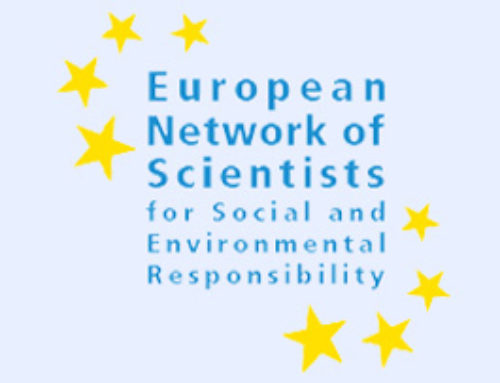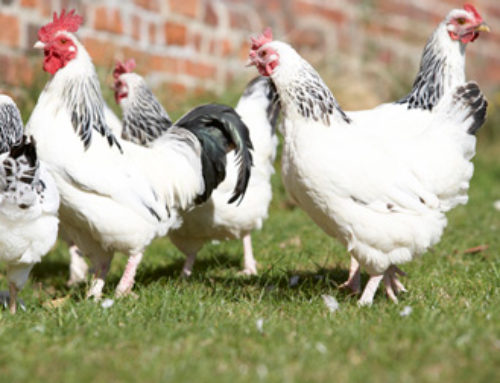 The horsemeat scandal is just the tip of the iceberg, as consumers don’t know what’s in their food, regardless of packaging fraud. More and more food contains residues of carcinogenic herbicides. The industry has a strong hold on Europe’s food safety agency, holding back independent standards and inspections.
The horsemeat scandal is just the tip of the iceberg, as consumers don’t know what’s in their food, regardless of packaging fraud. More and more food contains residues of carcinogenic herbicides. The industry has a strong hold on Europe’s food safety agency, holding back independent standards and inspections.
Two years ago, Danish farmer Ib Borup Pedersen thought an epidemic had broken out among his 450 pigs. Suddenly, his animals were suffering from chronic diarrhoea, eating less or developing stomach ulcers, while some of his piglets were born with disabilities and his boars displayed fertility problems. Something always seemed to be the matter. Not just with the pigs, but with the profits of his farming company as well. Due to the increasing number of unhealthy animals, his sales plummeted, while the expenses for vets and drugs kept rising. Until he asked himself the crucial question: what if it was the feed?
Pedersen followed his farmer’s intuition and exchanged the new feed for his old recipe. And what do you know – the health problems disappeared within two days. What was the difference? The feed that sickened the animals consisted of imported genetically modified (GMO) soy, whereas the old recipe consisted of soy without GMOs and fishmeal. Other farmers have since confirmed the findings, published by Pedersen on 13 April last year, in the Danish farming magazineEffektivt Landbrug.
Independent scientists were not surprised. They have increasingly warned against the GMO that Pedersen was using as feed, Roundup Ready (RR) soy, a crop genetically engineered to be resistant to Roundup. This is a weedkiller containing glyphosate, a toxin that kills all other plants without harming the crop. Both the glyphosate-resistant crop and the herbicide were developed by agricultural corporation Monsanto, which uses both products for its production of large scale GMO-monocultures in North and South America.
Birth defects
Other corporations produce similar glyphosate herbicides, ignoring the distressed cry of several Argentine farmers who sued Monsanto after witnessing an increase of cancer and birth defects among their children, as a result of using glyphosate herbicides. An Argentine professor has previously shown that glyphosate produces birth defects in the embryos of frogs and chickens.
The experience of the Danish farmer raises the question of how harmful the glyphosate residues are that end up in our food – in pigs, cattle or horses through animal feed, in human bodies through our consumption of meat and milk. Or even directly, because GMO soy proteins are used as an emulsifier in numerous food preparations.
Aziz Aris and Samuel Leblanc from the University of Sherbrooke, Canada, demonstrated the transmission of the toxin via GMO crops to the human body in February 2011. In a study published in the Elsevier journal Reproductive Toxicology, they revealed the presence of toxic Roundup components, such as glyphosate, in the bloodstream of pregnant women and fetuses. “Considering the toxicity of these pollutants and the vulnerability of fetuses, further studies are needed,” they wrote. The same warning resounded elsewhere. In Berlin, between 0.5 and 2 nanograms of glyphosate per milliliter of urine were observed among townspeople who had never had any direct contact with the toxin.
Gilles-Eric Séralini and his team from the University of Caen, France, conducted similar experiments on rats. Their conclusions, published in August of last year, in the journal Food and Chemical Toxicology, were shocking: compared to a control group fed on a normal diet, rats on a diet containing 11 percent of RR corn, died two to three times as often andfaster. Females were quicker to develop breast tumors; their hormone balance was upset. In males, the scientists observed 5.5 times more cases of vascular congestion and destruction of liver cells. But, more importantly, they developed four times as many tumors, up to 600 days earlier than the control group.
After this study, the European Parliament quite logically asked the European Food Safety Authority (EFSA) for a critical analysis of all imported RR-GMO feed, and its consequences for the public health. However, the EFSA did not act. On the contrary, it attempted to discredit the statistical reliability of Séralini’s study. In the EFSA, glyphosate standards are still determined by a scientific committee, the PPR or pesticides panel. Although its advice is not binding, the Commission tends to follow it without reflection. “The reason why the PPR panel’s judgments are so favourable towards the industry, is because members of the panel have ties to that industry,” says Nina Holland of Corporate Europe Observatory, an NGO that insists on greater transparency. “After a critical report by the Court of Auditors last year regarding conflicts of interest, their rules have become stricter, but the industry’s influence is still too big. The problem is that the agency employs few people on a permanent basis and that its panels need to rely on ‘volunteers’. The industry takes advantage of this fact by sending academics whom they support financially.”
“On the committee that advises on the European standards for pesticides are people with ties to the chemical industry.” NINA HOLLAND (CORPORATE EUROPE OBSERVATORY)
A telling example is the vice-president of the PPR panel, the Dutchman Theodorus Brock. He conducts research for the Alterra institute, operating under the aegis of Wageningen University. During the last five years, he has also worked as a consultant for Monsanto. His panel was among those to brush aside Séralini’s study and the Argentinean research on deformities as unreliable. “And that’s how it always goes,” sighs the Briton Claire Robinson, research director of Earth Open Source, an NGO advocating a sustainable food chain. “The problem is that the EFSA panels only take those studies seriously that are published by the industry or by universities funded by the industry. All research should be considered, and people need to accept the updating of knowledge.”
The industry’s wishes
Last year, in collaboration with academics from the School of Medicine of London’s King College, Robinson published a peer-reviewed paper in a journal called Environmental & Analytical Toxicology, which criticizes the admission of glyphosate and glyphosate-resistant crops. Robinson said: “The current EU-license for glyphosate dates from 2002 and is based on the German assessment of that time. It should normally have been re-evaluated last year. The European Parliament demanded tougher standards, but the Commission simply prolonged the current standards for another three years. There are, however, reasonable grounds to question the first admission that we analysed. There were certain birth defects, for instance, among the rats and rabbits that were tested, but these were presented inoffensively as ‘development variations’. On the other hand, we now have studies not only indicating the harmful effects of glyphosate but of other Roundup components as well. AMPA, for instance, the compound that is supposed to break down glyphosate in a natural environment, is harmful to human DNA. There are also indications that the commonly used side product,
POEA, which facilitates the penetration of glyphosate in GMO crops, also increases its penetration in human cells.”
Robinson’s team also doubts the ‘acceptable daily intake’ (ADI) for glyphosate. The Commission pegged it at 0.3 mg/kg, whereas initial animal testing would advise a minimum of 20 mg/kg.
Robinson said: “This also goes to show that the EFSA simply adapts the standards to the industry’s wishes. Lentils are a striking example. The residual standard for glyphosate was increased at Monsanto’s request” (from 0.1 mg/kg to 15mg/kg). The same more or less happened with the standards for animal fodder imported from Argentina.
The doses are increased because weeds are becoming more resistant to glyphosate herbicides. Herman van Bekkem, GMO campaign manager for Greenpeace, said: “That is because the industry either increased the concentration of its product or farmers started spraying more, with higher levels of residues ending up in the food chain.” Van Bekkem is worried because this year the EU is considering 19 GMO crops for cultivation in Europe.
“Thirteen of those are glyphosate-resistant. Once the farmers start cultivating these crops, there’s almost no way back. They’ll be trapped in a monopoly of package deals: GMO-seeds and weed killer are one and the same package. As consumers, we’d be far more exposed to glyphosate than we are now. If these crops are allowed, the use of glyphosate will increase by 800 percent.”
Source: De Morgen, 16 February 2013, Original in Dutch by MAARTEN RABAEY – Translated into English by New Europe Translations





“If these crops are allowed, the use of glyphosate will increase by 800 percent.”
Dear Earth Open Source Angels,
I write this lying in bed, early morning with a wounded heart… Just turned 68, June 4. Relatives, young and old, childhood friends from both US coasts and abroad , came to tiny Truth and Consequences, NM where I reside. They think this is my last birthday.. Pehaps. I feel disheartened with our resistance against Mon Satan and its ilk.
Have you seen how google and yahoo search engines have printed first pages all the NEGATIVE AND BIASED POSTINGS AGAINST THE SERALINI STUDY?
How do we address this to global corporate controlled presstitutes and Bilderberg planners?
Been diagnosed with mercury poisoning since 1983. Undergone four major surgeries, one minor, costing over $600,000.. Currently, since Dec 2012, I’ve been unable to walk due to severe rheumatoid arthritis and weigh 89 pounds at 4’11. MD’s recommend one hip replacement.
at $89.000.
I am a living victim of dioxin poisoning and from a host of other man made chemical, pesticide, herbicide contaminated food, air, water , medications, while living in Los Angeles, CA from 1970 to 2008.
Am sure am still alive because I was born 1945 in the once pristine island of Bohol, Philippines, which, alas in the last 11 years have been under horrendous attack by the greed elements of profit from tourism and unsustainable development..
Bohol is the only Philippine island which has disallowed and officially repudiated GM corn.
Philippines, of course has the Rockefeller global brainchild, IRRI. It was in the 60’s heavily promoted by business and the UN as the global green revolution, which has turned out to be a dismal failure. in all third world nations especially Africa. IRRI is primarily responsible for decimating our once diverse indigenous rice varieties.because it was heavily promoted by dictator Marcos and that steel butterfly Imelda, who recently won as a congresswoman.
Am writing this to uphold the courage and dignity of my tiny island Bohol and its Tawo people for rejecting GMO’s and unsustainable progress or run away development.
Earth Open Source, thank you for Being.
Salamat jamu. from a wounded warrior, who will die resisting greed, dehumanization and the plundering of Mother Earth.
Lilia Adecer Cajilog
Truth or Consequences, NM 87901
Landline…575 297 4018